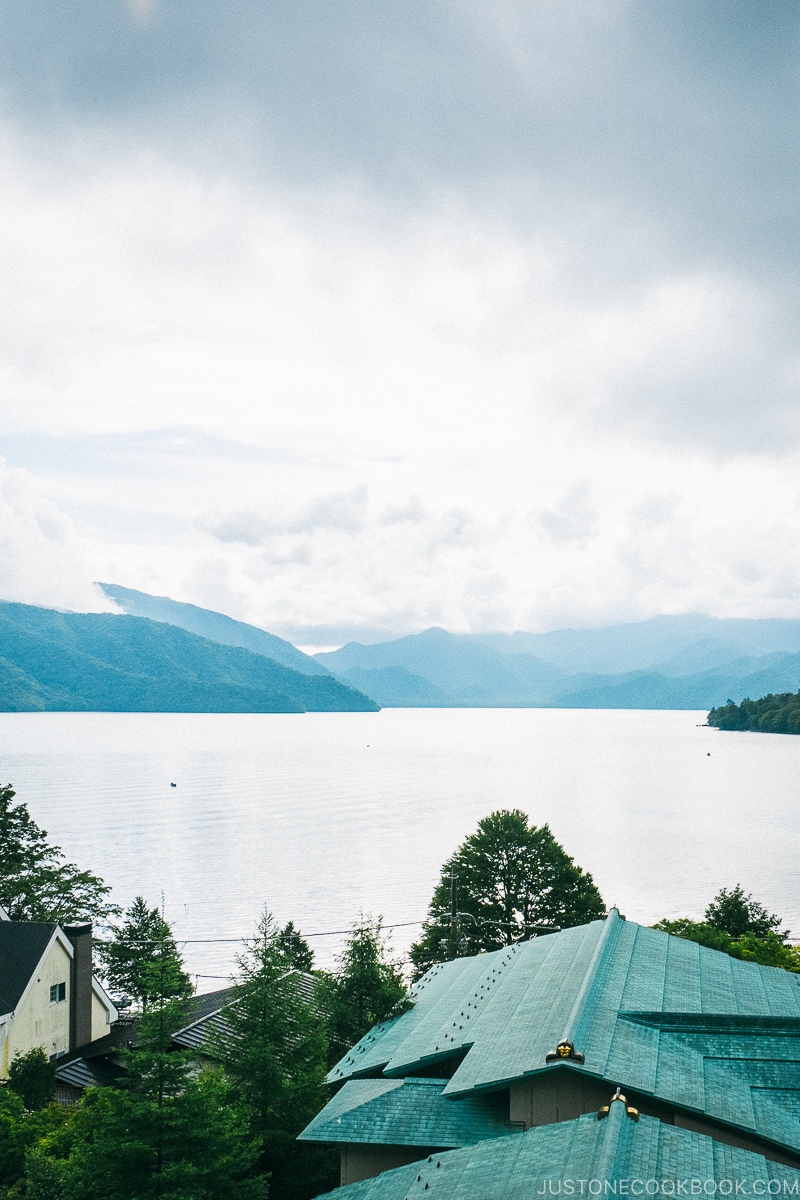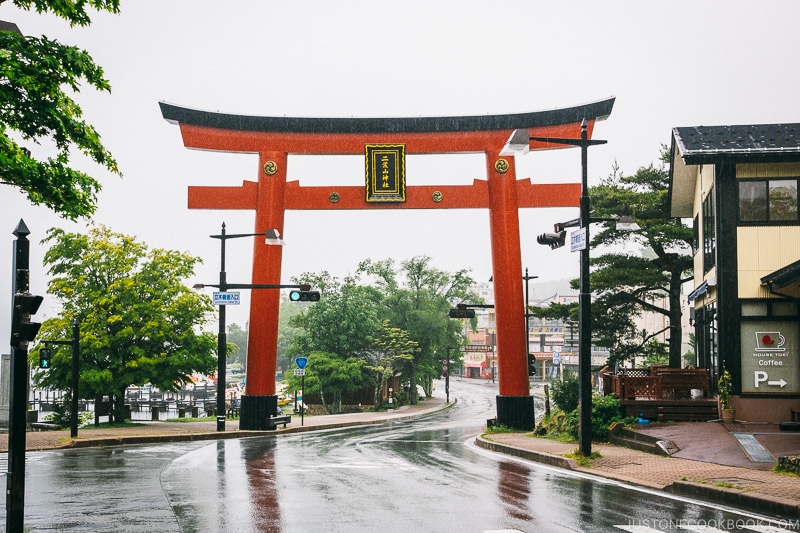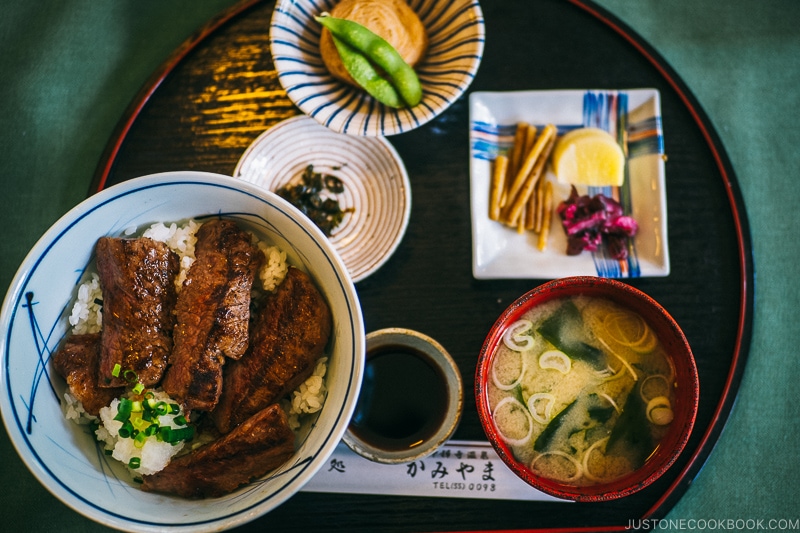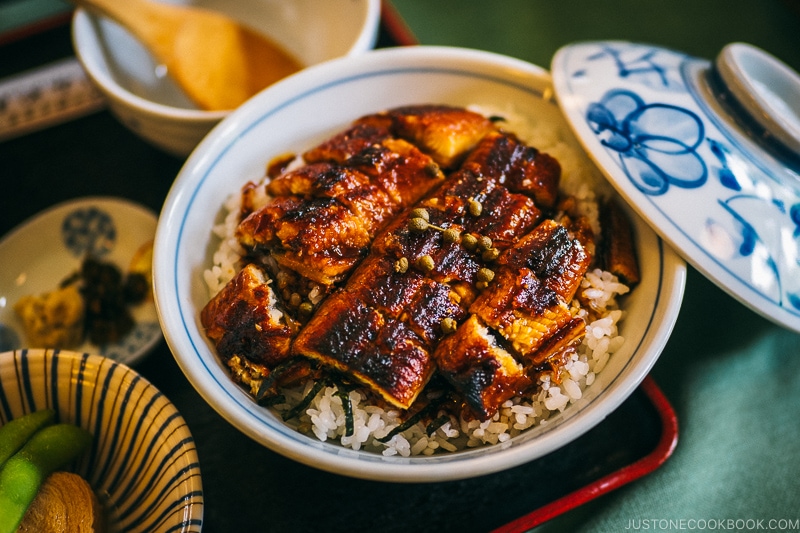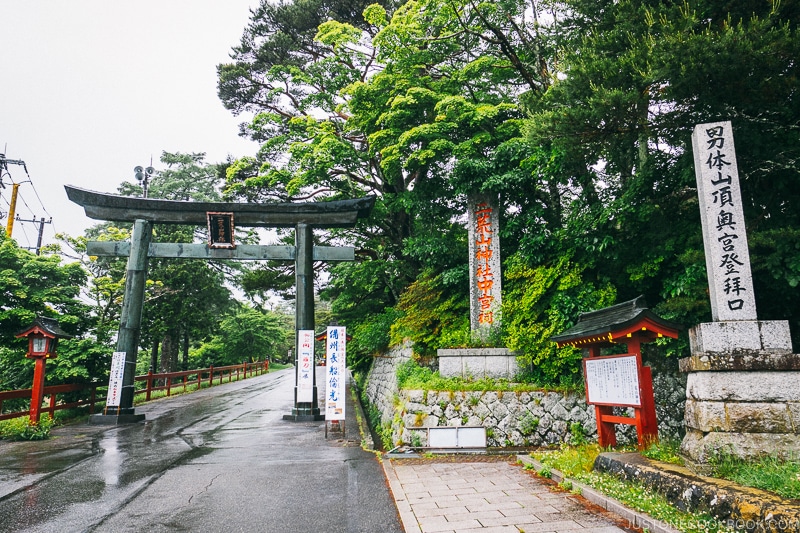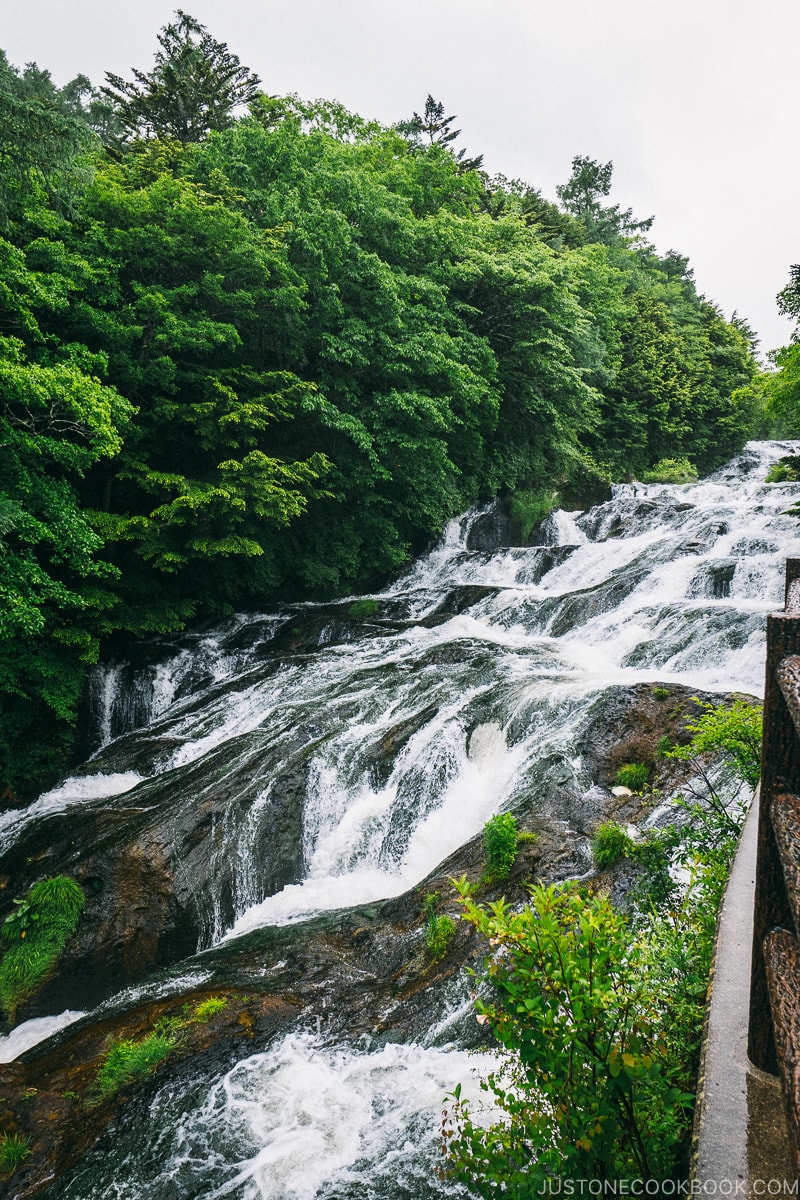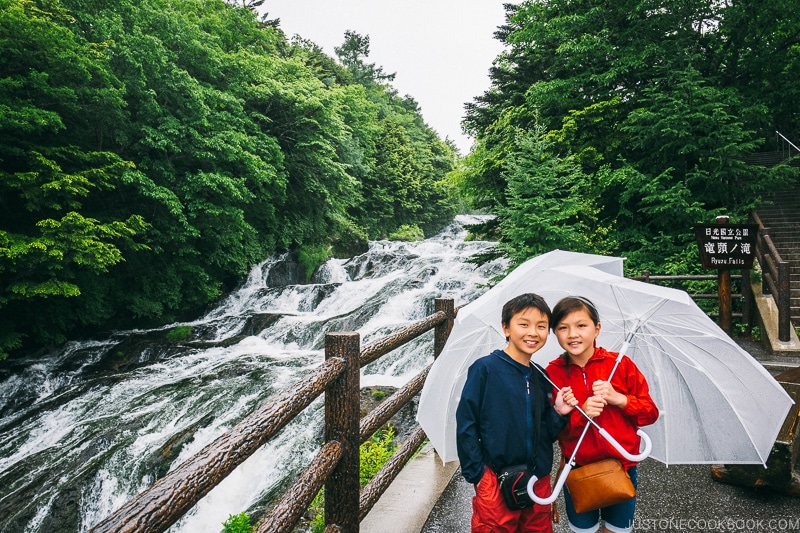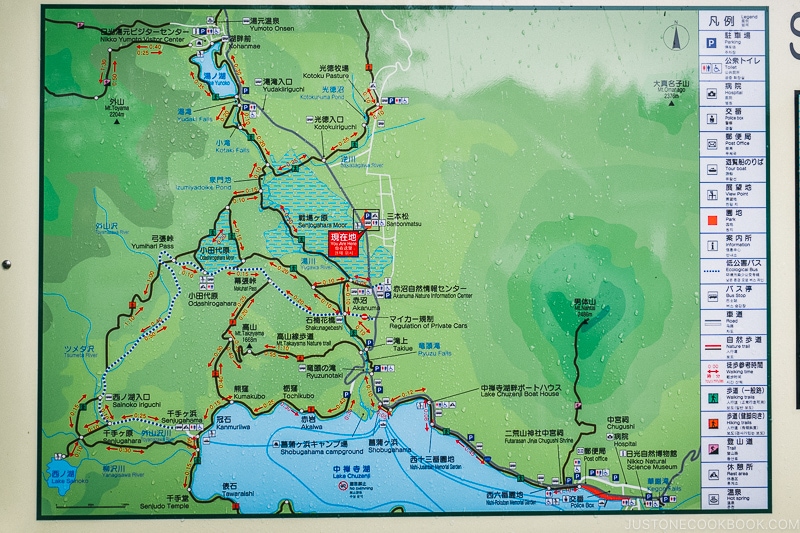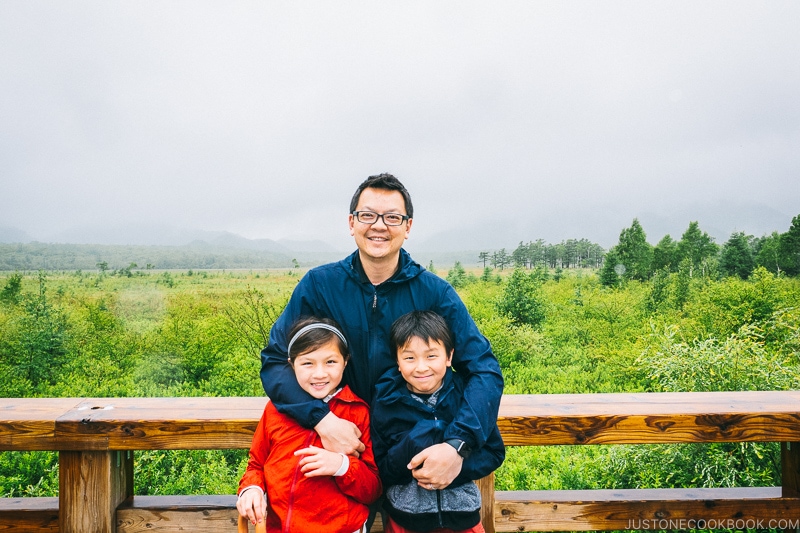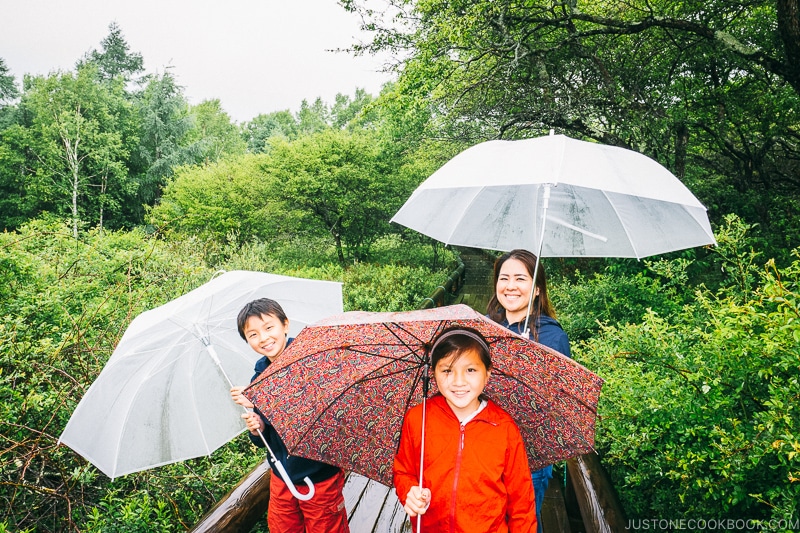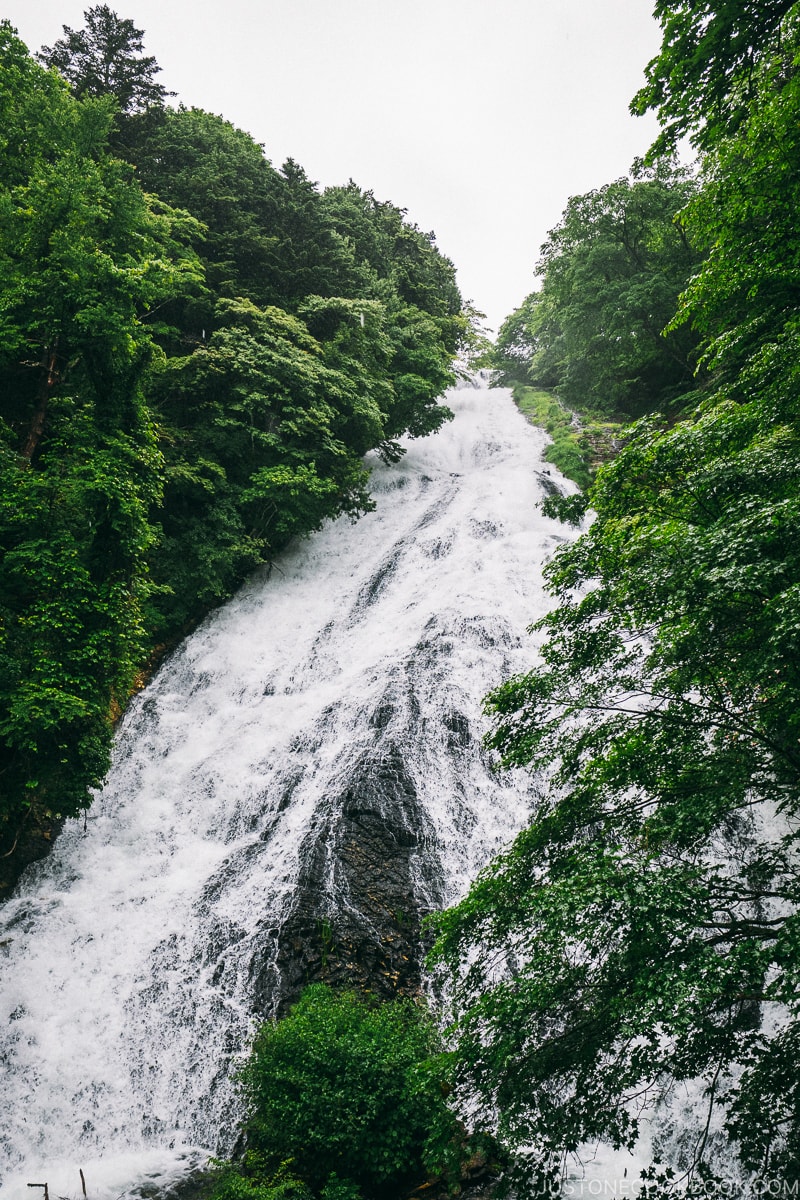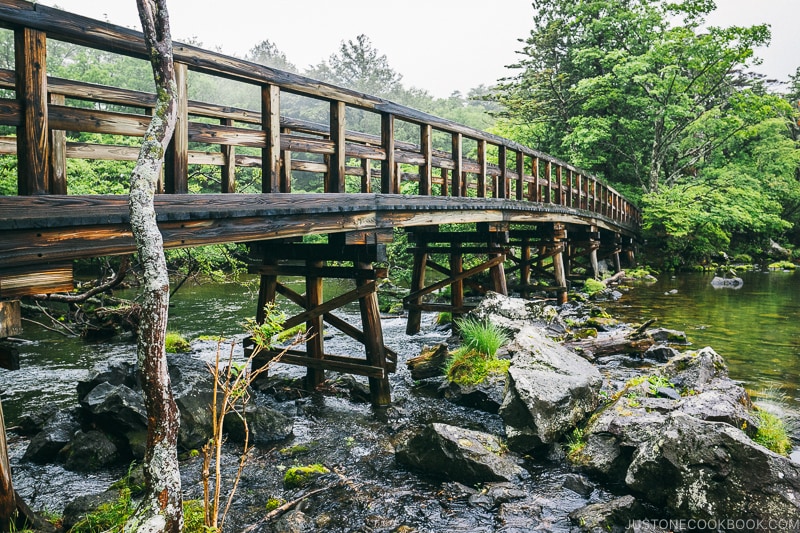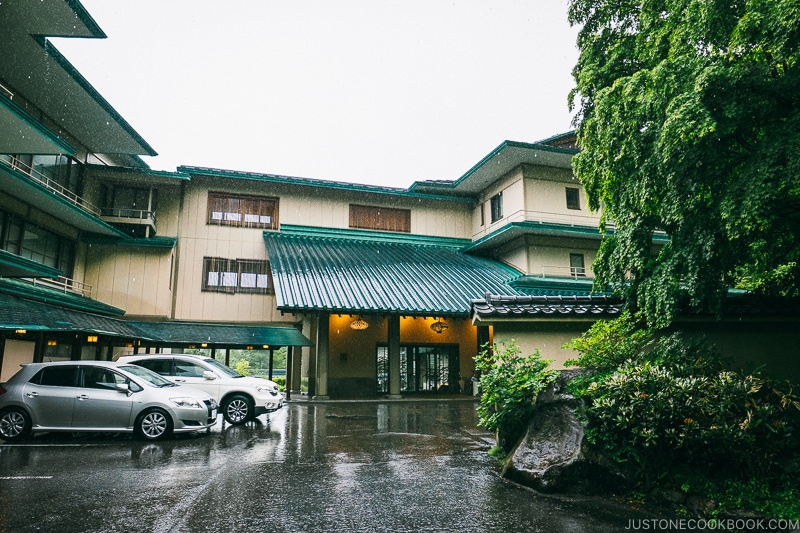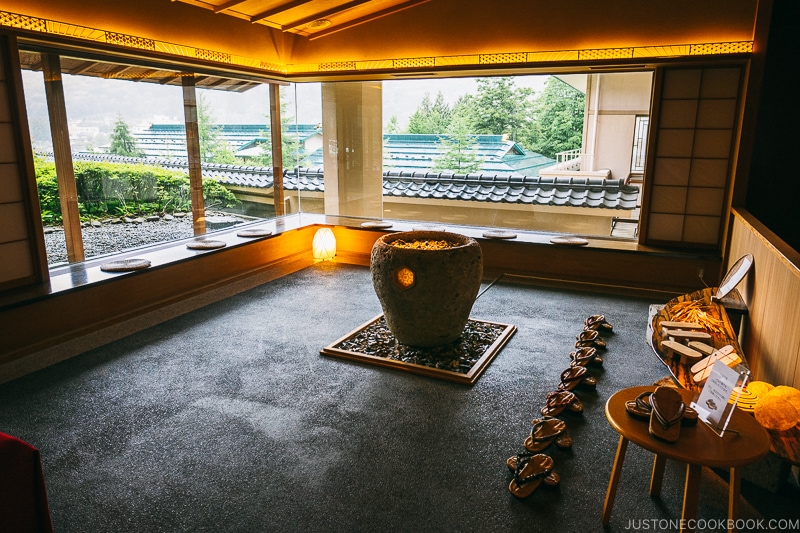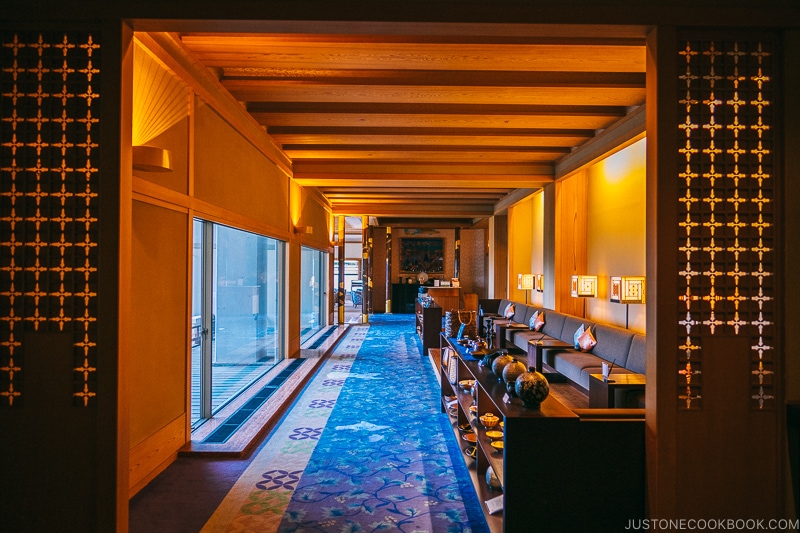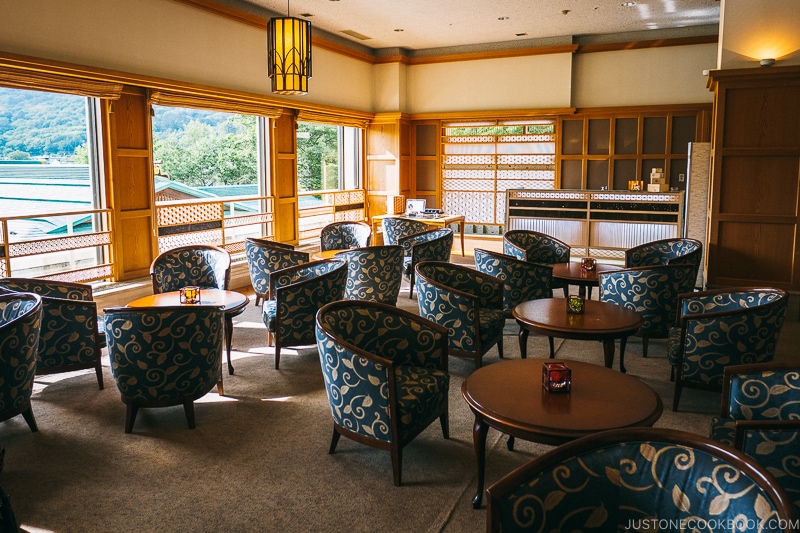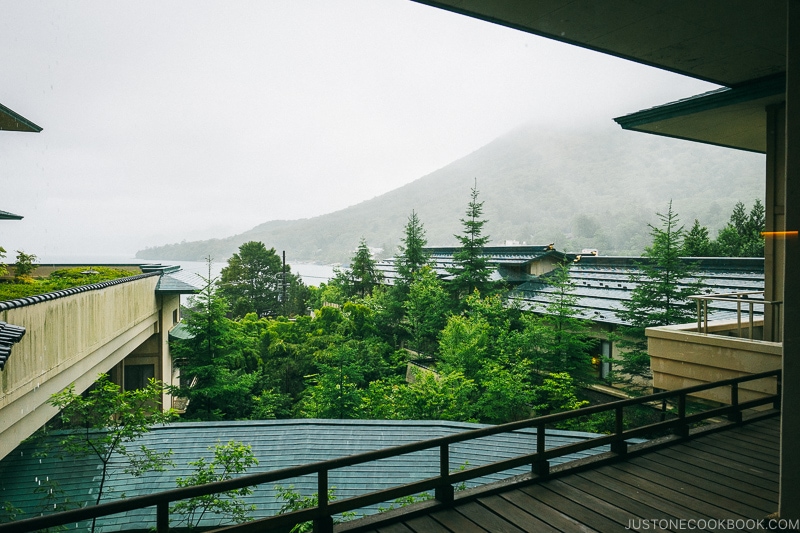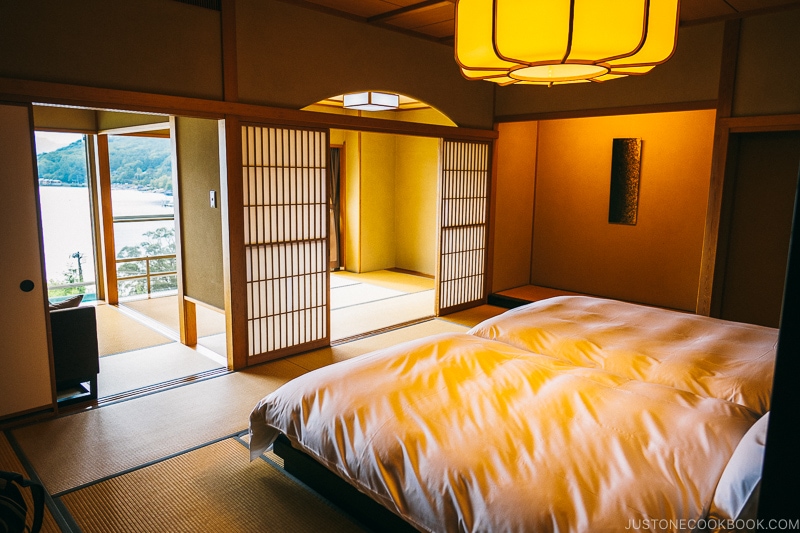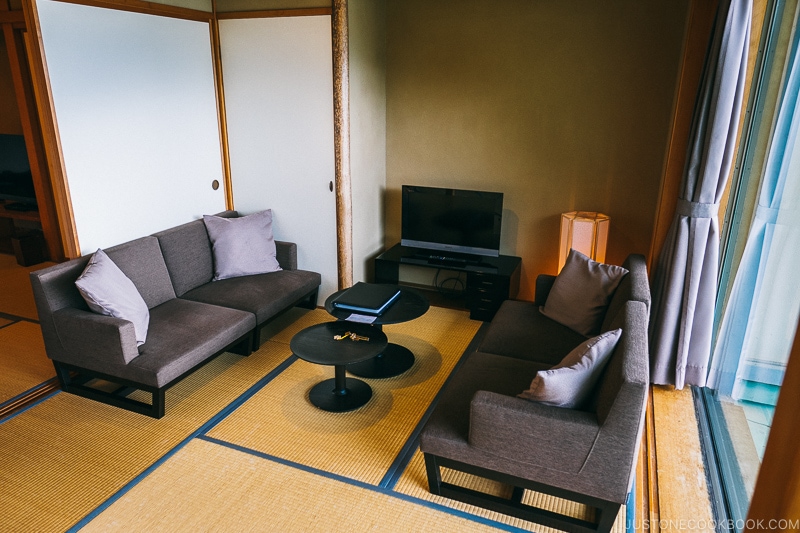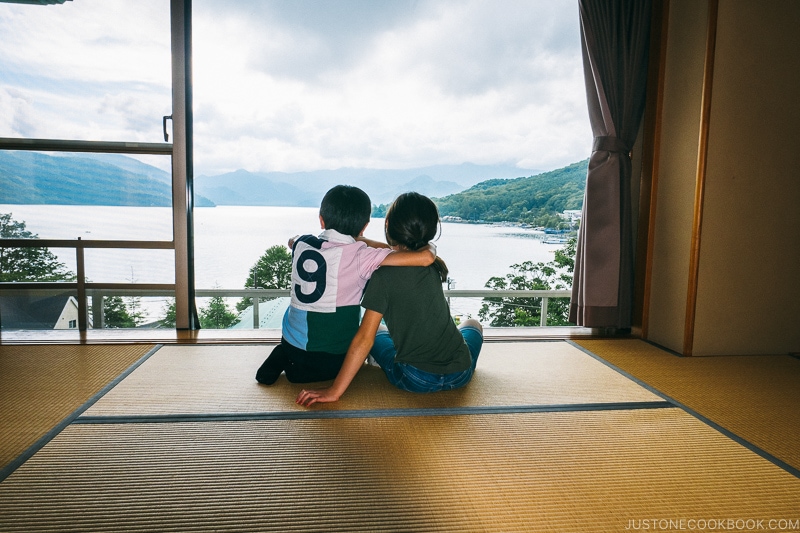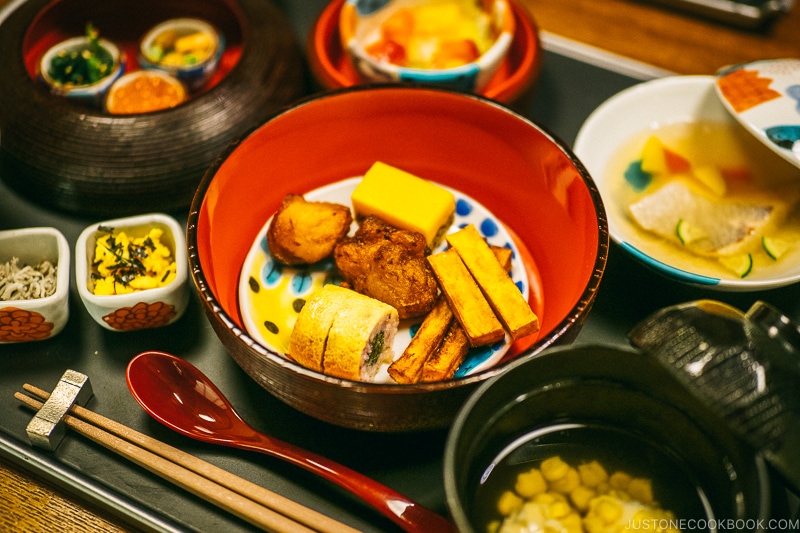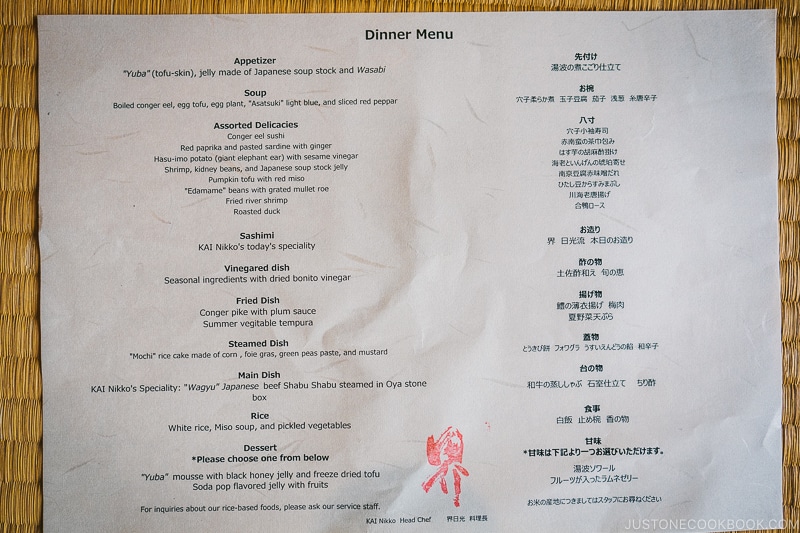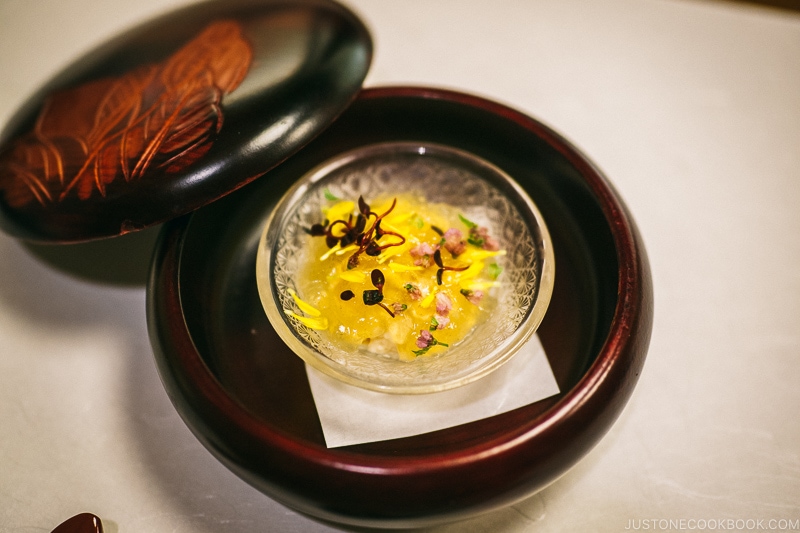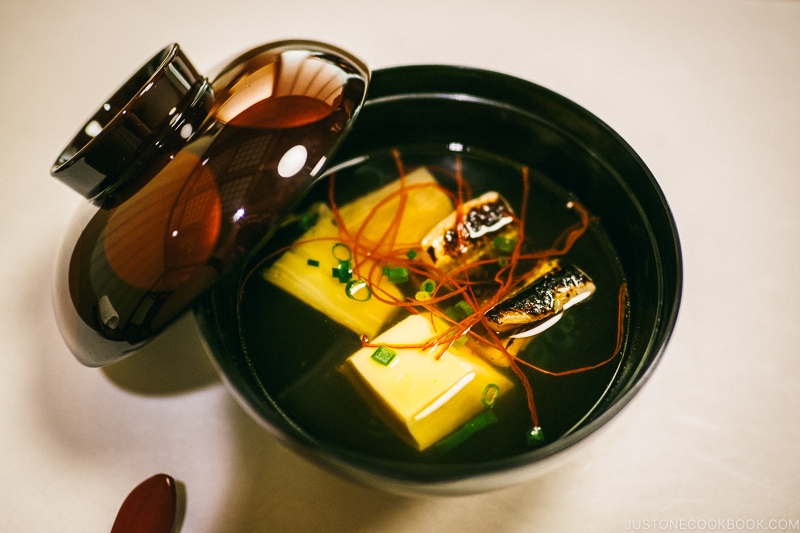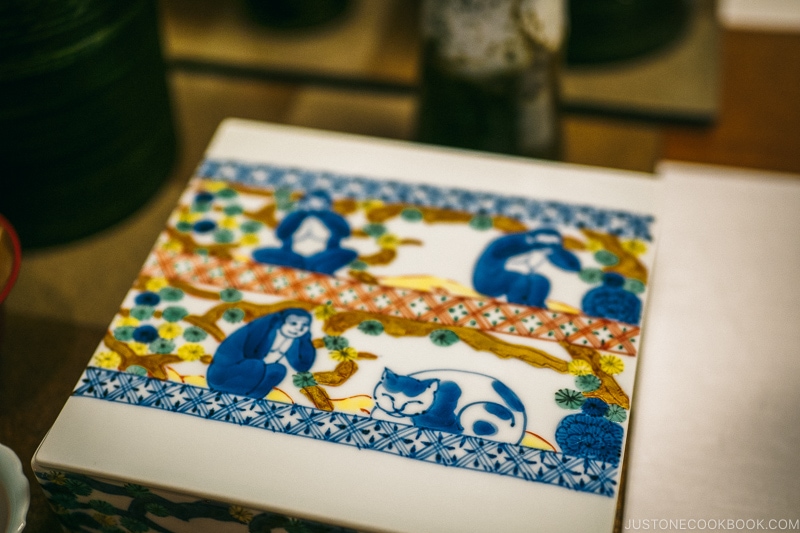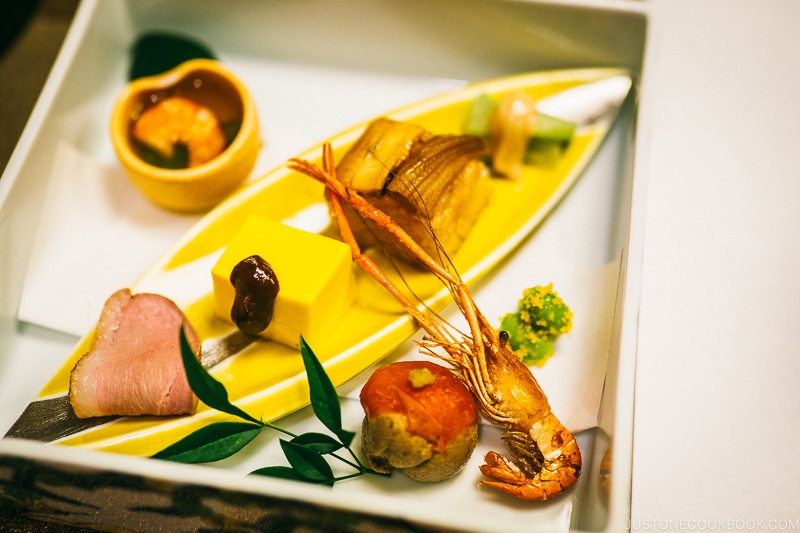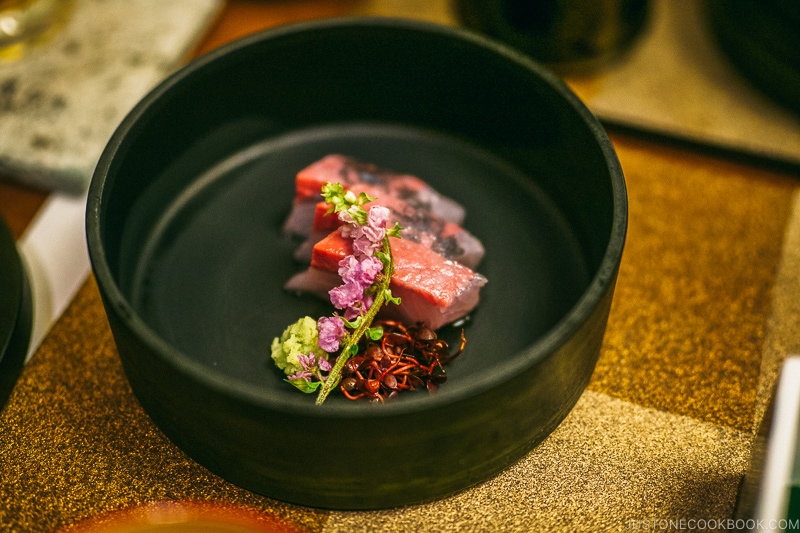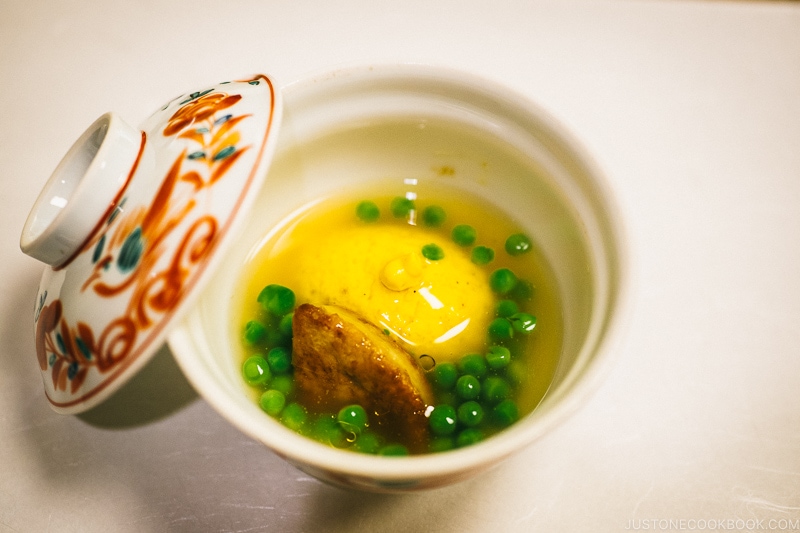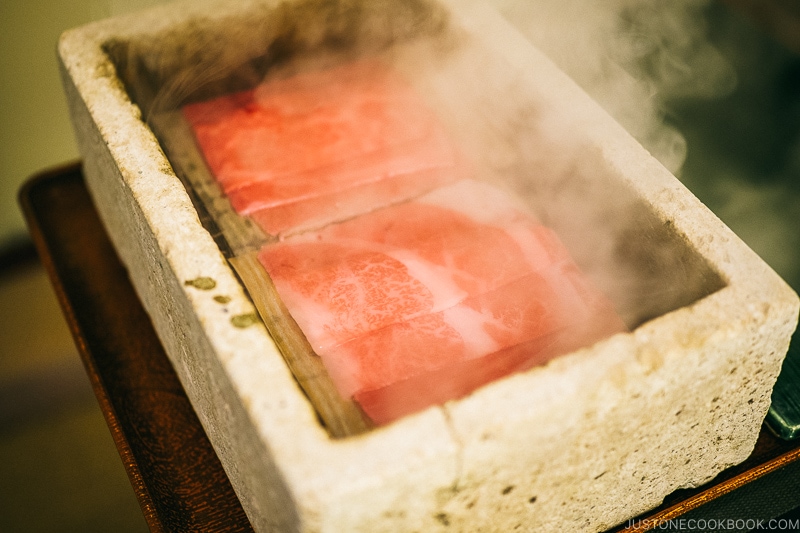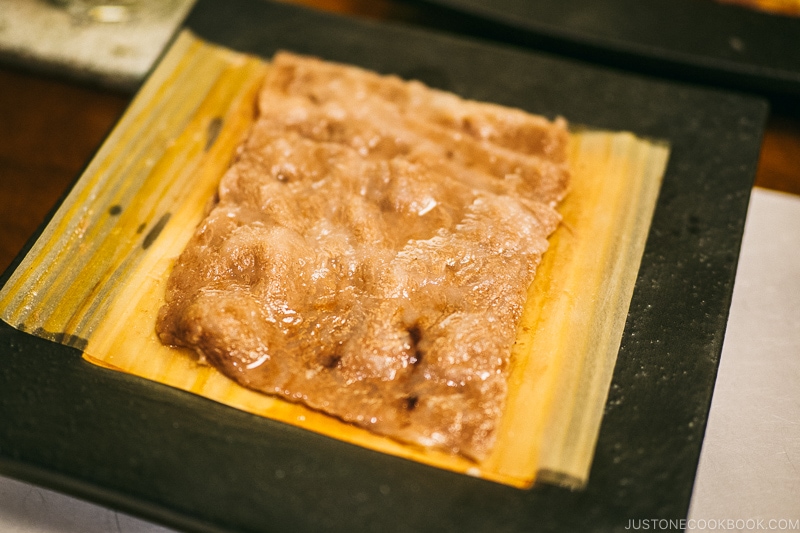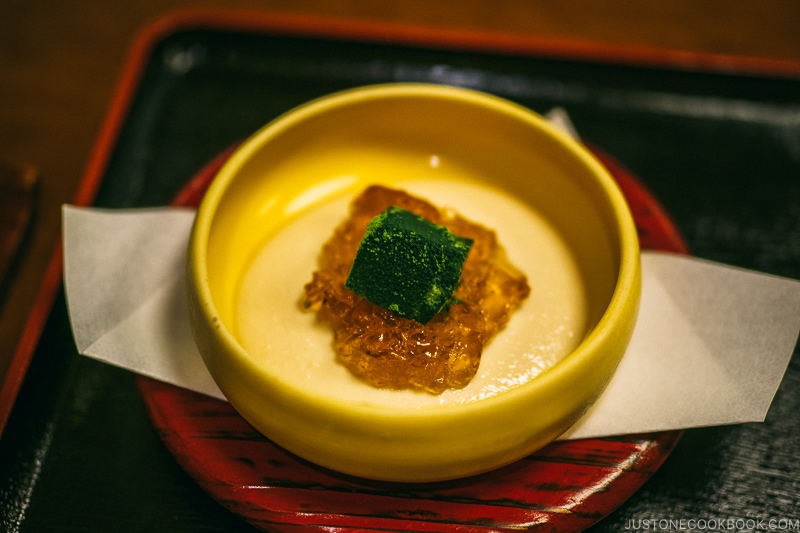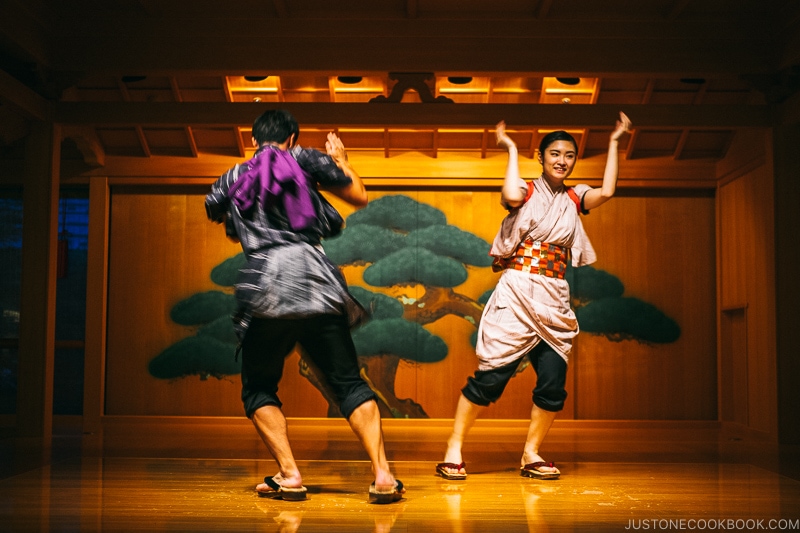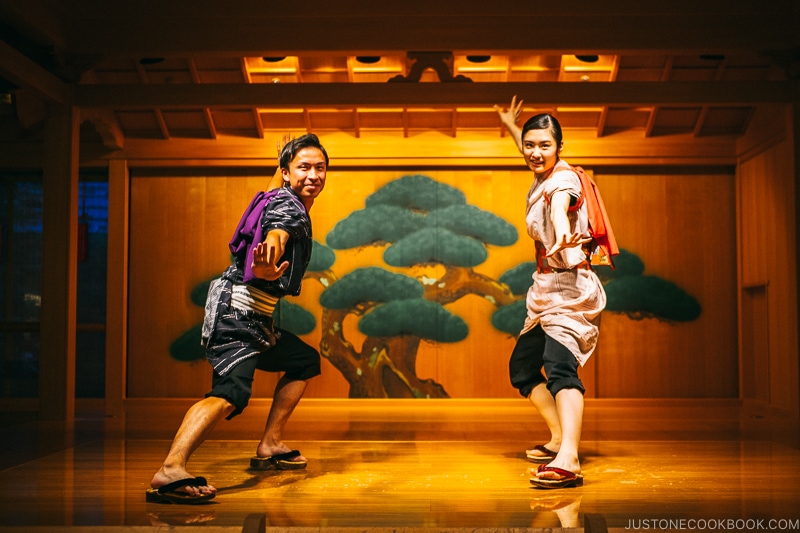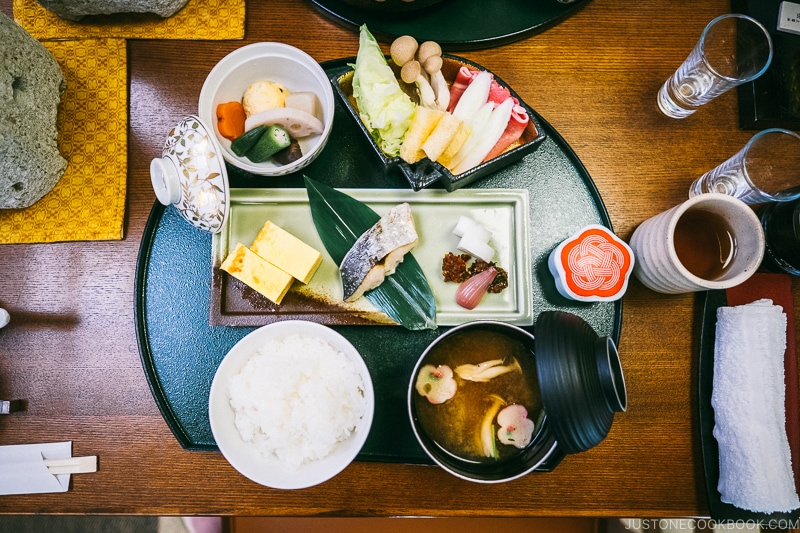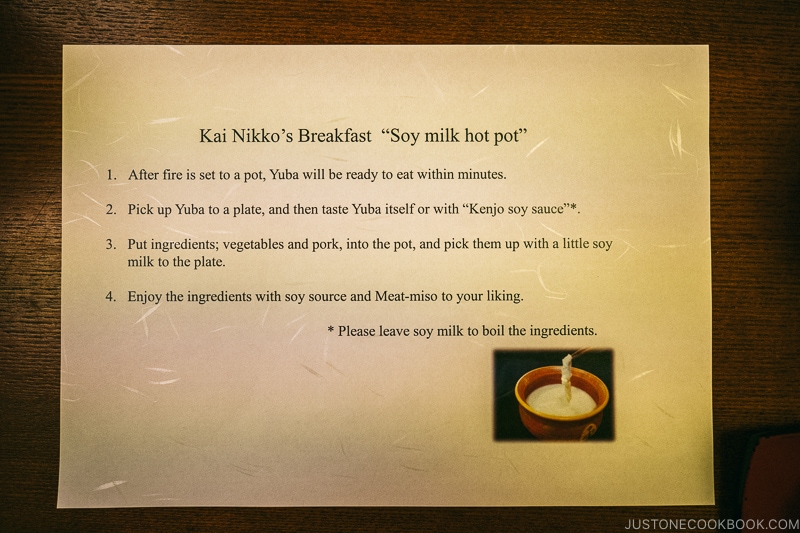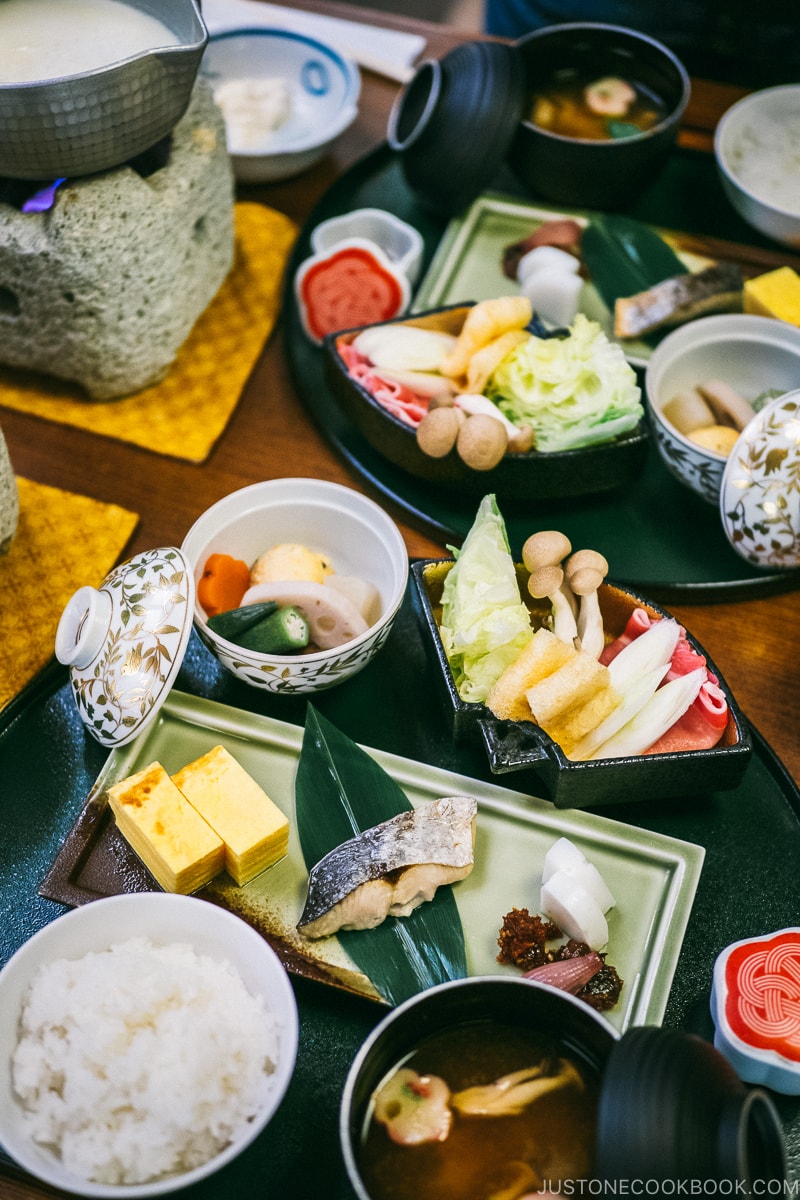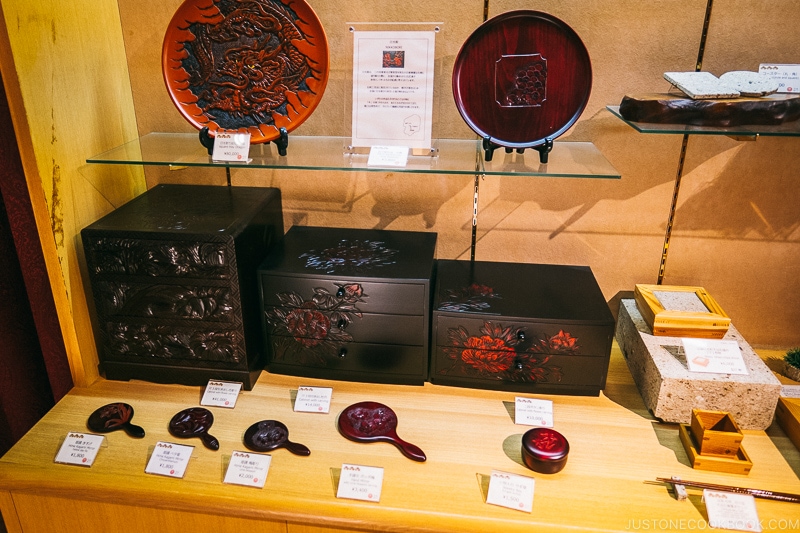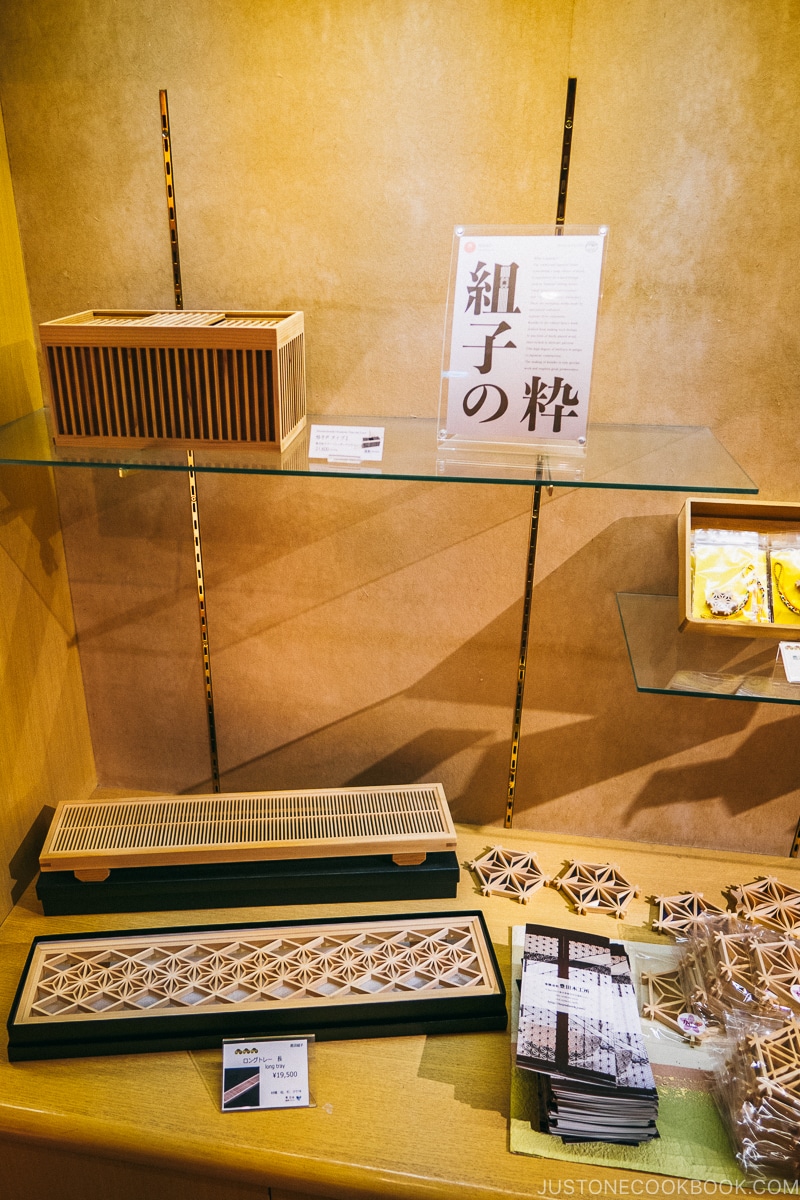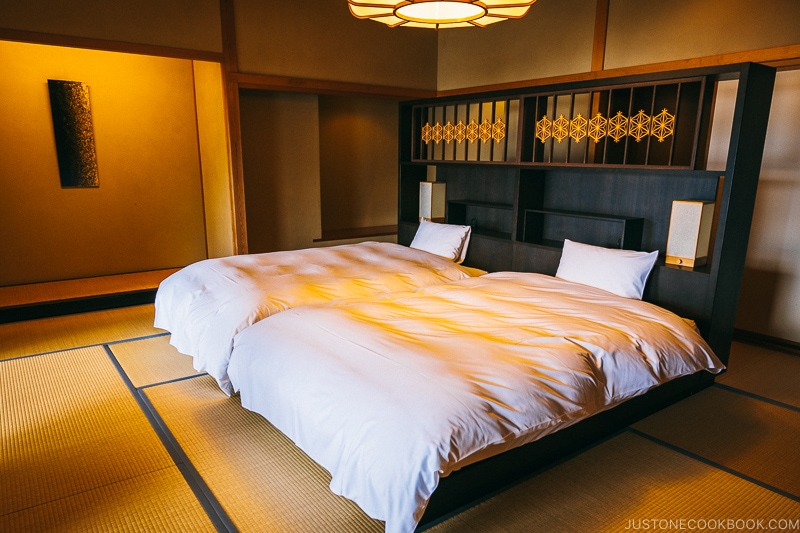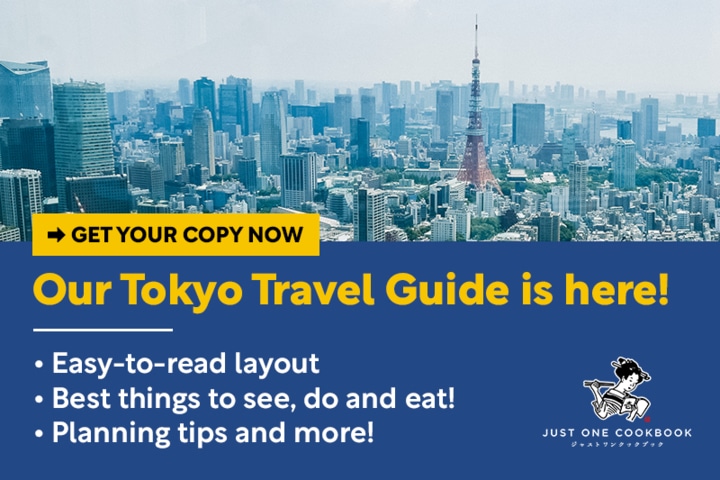Nikko is known for its beautiful sceneries and if you love nature and likes visiting places off the beaten path, then we recommend spending some time around Lake Chuzenji and enjoy its natural surrounding and fabulous hot springs.
Where is Lake Chuzenji
Things to do around Lake Chuzenji
Ryuzu Falls 竜頭ノ滝
The first stop of our visit is Ryuzu Falls, it is about a 10 min drive from the east end of the lake. At the bottom of the falls are a souvenir shop and a restaurant where you can enjoy food or snack while admiring the scenery. To observe the fall, there is a walking path to the right of it and it goes up alongside the waterfall. Shortly after passing the vermilion torii gates, you’ll soon see the dark torri gate for the Futarasan Chugushi Shrine. If you wish to climb Mount Nantai (about 8 hrs hiking round trip), the trailhead entrance starts at the shrine (500 yen fee). There’s no cost to walk on the path next to the falls. The waterfall is unique as the water flows down uneven rock surfaces over 300 meters long, forming many mini-waterfalls.
Senjogahara Marsh 戦場ヶ原
Head north from Ryuzu falls and we’ll stop by Sanbonmastsu Park near Senjogahara Marsh. Around the marsh, there are plenty of hiking trails to enjoy beautiful views in the area. Senjogahara Marsh is also referred to as wetland or moor and its one of the highlights of Nikko National Park. Unfortunately, on the day we visited it rained on and off so we didn’t get to hike very far.
Yudaki Falls 湯滝
Continue heading north and another spot worth stopping at is the Yudaki Falls. It’s an impressive and powerful waterfall that’s 75 meters tall.
Lake Yuno 湯ノ湖
The last stop on our nature itinerary is Lake Yuno. On the north shore of the lake is Oku-Nikko Yumoto hot spring resorts town with filled with many hot springs ryokans. Inside the town, you can see hot springs bubbling up from the ground. There’s a trail that goes around the lake that takes about 1 hour to walk around. As you walk along the west side of the lake, car and modern-day noises disappear and visitors can enjoy nature as intended. Walking around, you will smell sulfur emitted by the hot spring from the town (it’s not rotten eggs).
Hoshino Resorts KAI Nikko 星野リゾート 界 日光
After a day of exploring and hiking, we rested our body and mind at Hoshino Resorts KAI Nikko. We usually don’t stay at super nice ryokans when we travel in Japan due to cost so this was an exception for us. A couple of reasons why we splurged:
We’ve shared the details of our ryokan stay below but if you are interested in just the high-level summary and our thoughts, here they are: A post shared by Namiko Chen (@justonecookbook) on Jun 19, 2018 at 4:19pm PDT
The Lobby
As soon as we parked our vehicle, the hotel staff greeted us at the entrance and handled our luggage. At most Japanese ryokans, the staff greets you at the entrance and takes care of your luggage and belongings. After checking in the luggage will be brought to your room by the staff (no tips will be accepted so don’t offer).
The interior of the hotel was elegantly decorated with Japanese elements. In the sitting room, you can see Mount Nantai to the right and the lake in front of the hotel.
The Room
The rooms are fairly large for a Japanese ryokan, with two twin-sized beds in the main bedroom and 2 additional sitting rooms.
The empty sitting room was converted to a sleeping room with futons for the kids at night. If you are not comfortable using the public bath, there is a large wooden bath inside the room to soak in.
Dinner at Hoshino Resorts KAI Nikko
Both dinner and breakfast were served in the dining room on the first floor of the hotel. To get to the dining room, hotel guests would walk through a glass corridor with stone path. The dinner was spectacular, not only was the food super delicious the dinnerware they used were first class. Even the kids’ meal was really well prepared. Typical ryokan kids meal usually only include hambagu, ebi fry, and omurice. At Hoshino Resorts KAI Nikko the kids meal included ikura, fish soup, etc. It was a memorable meal and especially happy one as I found out that my wallet was found and turned into Nikko’s police while eating.
Nikko Geta Dance at Hoshino Resorts KAI Nikko
After dinner, there was a geta performance on the stage near the dining room. After the staff explained the history of Nikko Geta (over 400 years) and how they are made, they perform a dance wearing these special shoes.
Towards the end of the show, guests are invited on stage to wear the Nikko geta and dance together to the music.
Breakfast at Hoshino Resorts KAI Nikko
Breakfast was very delicious and featured Nikko’s specialty Yuba. Pork and vegetables were cooked inside the soy milk broth as the main course besides the Japanese breakfast side dishes.
Nikko Woodcraft 日光彫
In the gift shop area of the hotel, there are several Nikko woodcraft souvenirs for sale (some of them are really pricey). Nikko’s area is known for woodwork made from a unique tool called “hikkaki” (ヒッカキ). The history of woodcraft in the Nikko area likely originated from the 400,000 craftsmen who were recruited from all over Japan to work on Toshogu back in the 1600’s. Nikko woodcraft typically features plants as the main art. You can experience carving your own Nikko woodcraft at the Nikko craft center.
Another wood feature you see in Hoshino Resorts KAI Nikko is kumiko (組子) made by specialized craftsmen. What is kumiko? It’s refined latticework interlocked in intricate patterns. This type of craft is difficult to achieve and kumiko wood patterns could be seen on windows and decorations throughout the hotel. Find out more information here.
Thank you for reading Lake Chuzenji travel guide and if you love nature and hiking, we hope you’ll find some time to visit the area. Just keep in mind winters are really cold so the best time to visit is from May through October. Besides what we’ve shared above you can also visit the former British and Italian Embassy Villa and Chuzenji Lake Observation Deck around the lake so there are plenty to do. We’ll see you next inside the caves of Oya History Museum.
Nikko Travel Guide
